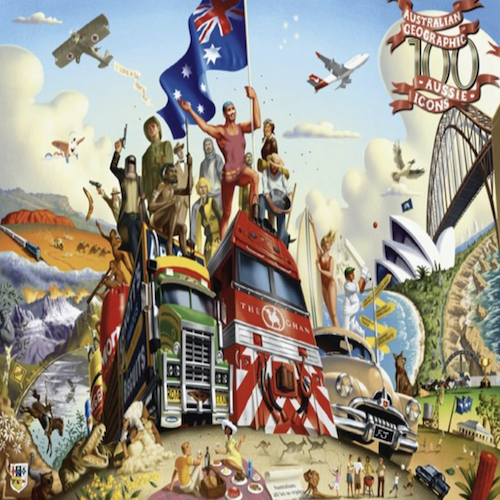EY Y03 L07 The Cost of Culture
This week’s Questions

- Do you have any interest in Japanese antiques and family heirlooms? Why?
- Japan is a country where consumers often expect very high standards and where households are prepared to spend a lot of money on well made artisan products that, in some cases, get passed from generation to generation. These include kimonos, Buddhist altars (butsudan), Japanese lacquerware, Paulownia chest of drawers (kiri tansu), inkan, swords and hina doll displays. Name something in your home or in your parents' home that is considered a family heirloom. Tell us a little about what it looks like and how you feel about it.
- Who originally bought it? How much did they pay (even a very rough approximation is fine)? Is it worth that now? Why?
- Tell us about a friend, an acquaintance, a family member or a celebrity that you have read about who owns an interesting, beautiful or really expensive Japanese antique.
- Do you think young people today are as likely to invest in these items as their parents and grandparents? Why?
- The Japanese government often spends a significant amount of money trying to keep traditional craftsmanship alive. Is this a good use of tax payers' money? Why?
This week’s Responses
Sorry. You must be logged in to view this form.
Teacher’s Compositions

by Jim Usher
Read Now
Question 1
1Question 2
2Question 3
3Question 4
4Question 5
5Question 6
6Tough Vocabulary
- 0 -
comments

by Kamille Mercado
Read Now
Question 1
Yes, I do. I'm curious about kimono which are passed down from generation to generation. I love kimono and think they are beautiful. I know that production methods for making kimono have changed a lot over many years, which means there are many different styles and materials that have been used to make them. I am particularly curious about the value of a kimono based on its age, material and quality of the design.Question 2
The only family heirloom my family keeps are jewelry. The family jewels are passed from mother to daughter in my mother's side of the family. We have a wonderful collection of all jewelry made from all sorts of jewels like diamond, emerald, garnet and onyx. We also have a collection of pearl jewerly. When I turned 18, my grand aunt gave me a diamond ring that I wanted from the family collection since I was a child. I was so happy to receive it. When I got married, my mom gave me diamond earrings and a full set of pearl jewerly. She also gave me a diamond and gold ring that once belonged to my grandmother. I was very happy to receive them and love to wear them when I can.Question 3
My mom, grandmother and grand aunt would buy the jewerly on their own. Our family has a jeweler that we regularly go to. One piece of jewerly can cost around 80,000 yen. I'm sure it is worth much more now. Jewelry prices don't usually change. It is probably even more expensiven now because it's an heirloom. Jewerly increases in value over time like paintings.Question 4
I don't really know anyone that owns an expensive Japanese antique. But my best friend's family in the Philippines also collects jewelry. She has a nice pair of diamond earrings which she wears on important work meetings.Question 5
I don't think so, because young people now a days are simply not earning as much as the previous generations, so it's difficult to buy luxury items like that because most of the money is spent on basic necessities.Question 6
I think Japanese craftsmanship is one of a kind and the quality is the best in the world. It would be a terrible shame if these works of art are lost forever. If I could afford it I would definitely buy expensive products from Japanese craftsmen.Tough Vocabulary
- 0 -
comments

by Jon Hay
Read Now
Question 1
I have a little bit of interest in antiques. I like history and I enjoy looking at some historical art works, especially old paintings and items like swords.Question 2
I think my parent-in-law have some hina dolls that have been passed down. They do not look so old. I think they have been looked after well.Question 3
I am not sure, I vaguely remember my wife mentioning her grandmother gave it to her parents. I am not sure which grandmother.Question 4
I bought some sake cups for my father in Kyoto as a gift. They are not old but look really pretty. They had many nice traditional pictures on them.Question 5
I think there will always be collectors out there, but I think that the market will shrink.Question 6
I have mixed feelings about this. There are many important things that need funding but keeping traditions alive is also important. I am leaning towards saying it is a good use of money, but only slightly.Tough Vocabulary
| - English - | - Japanese - |
|---|---|
| passed down | 継承 |
- 0 -
comments

by Antonio Santosa
Read Now
Question 1
Yes! As someone who studied Japanese society and global culture at Doshisha University, I naturally took some interest in antiques and things that symbolizes different aspects of the Japanese culture.Question 2
The only thing that can be considered a family heirloom is one of my mother's family's photo albums. While this item has no monetary value, it is without a doubt invaluable. I have only seen it once a long time ago as this album is stored in my grandmother's house. I don't exactly remember what I saw inside that album as I was still very young.Question 3
I assume someone who lived long before my grandmother was born bought it. I have no idea when it comes to the value of this album but I'm pretty sure that it has no monetary value in the present date.Question 4
I have a student who owns a "tsuba" from the Momoyama period. This item was beautifully made by a master sword artisan named Umetada Myōju. I believe that this antique is worth millions of yen in the present date.Question 5
I don't think young people today invest in tangible items anymore. My circle of friends and I invest in the crypto market and stocks as we believe that we're living in a digital age and everything is going digital. Investing in tangible items sounds interesting but perhaps young people don't really do it as much as their grandparents.Question 6
I believe that there are far more pressing problems that the government needs to spend money on. With the current state of Japan's aging population and the fact that Japan has a public debt of more than $10 trillion, perhaps the Japanese government can allocate taxpayers' money on issues that affect the whole country negatively. Traditional craftsmanship is a significant part of the Japanese culture, but I believe that the government's spending, compared to the country's GDP right now is very imbalanced.Tough Vocabulary
- 0 -
comments
